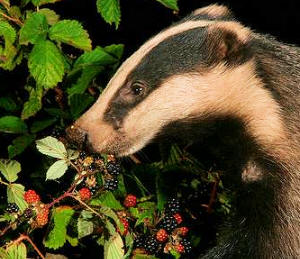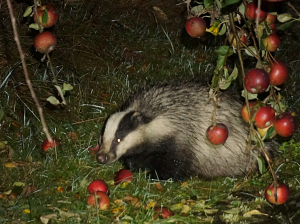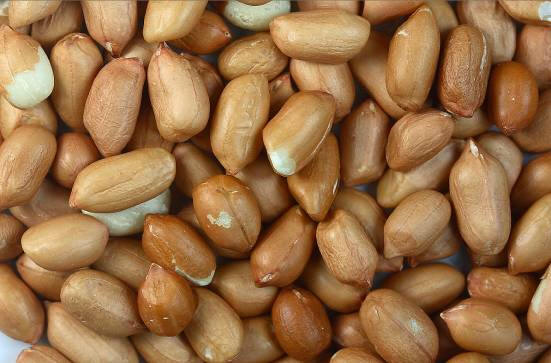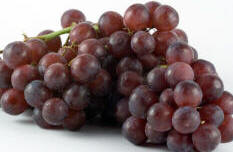 |
Fruit
| Badger Encounters in the Wild book |
![Badger Encounters in the Wild Jim Crumley [Book]](../../images/badger_encounters_in_the_wild.jpg) |
Superb
book of Jim Crumley's encounters with badgers in the wild in Scotland. The quality of the writing is superb.
A great read. Click here to buy:
Encounters in the wild
|
In  the autumn, it becomes very important that badgers eat as much food as they
can, as they need to put on weight, to help sustain them through the winter
months. They do not hibernate, but the colder weather, means less food, and
under-weight adults or small cubs will not survive bad winters. the autumn, it becomes very important that badgers eat as much food as they
can, as they need to put on weight, to help sustain them through the winter
months. They do not hibernate, but the colder weather, means less food, and
under-weight adults or small cubs will not survive bad winters. Accordingly, badgers will tend to eat all manner of
free
Autumn food
- including:
- berries (like elder berries, strawberries, blackberries and even yew
berries)
- nuts - like acorns, beechnuts, cobs nuts. They will also eat
peanuts and brazil nuts (plain, with no salt and no
chocolate!)
- grapes in vineyards and domestic gardens
- fruits which fall to the
ground, such as grapes, apples, pears, cherries, plums and damsons
 Windfall apples are major food sources in the autumn. This is
why current (and even abandoned) orchards may be frequented by
badgers in the autumn. Windfall apples are major food sources in the autumn. This is
why current (and even abandoned) orchards may be frequented by
badgers in the autumn. The two serious issues here are the
consumption of strawberries and grapes - both of which are loved by most
badgers. Damage to strawberries may be very upsetting for gardeners who see
their much loved crops eaten by the badger. Some commercial strawberry crops are
grown on raised tables in greenhouses, so they are probably more resistant to
badger damage. Grapes tend to be grown outdoors (or in open access areas); so
consumption of the grapes can be one problem and damage to the vines another. As
more grapes are grown for wine in the UK, this problem is likely to get worse;
so growers need to plan how to fence badgers out of their vineyards well before
the grapes become sweet and the crops are near to harvest. The fruit eaten by
badgers will affect their droppings, in terms of colour and texture. Badgers
will eat the hazel nuts with the shells too; and broken remnants of the shells
will remain in their poo. Likewise purple blackberries and elder berries; and red
strawberries/raspberries, will stain their droppings a purple/red colour for a
few days.
  
Where badgers deposit their dung in latrines, this tends to decompose and leave
nitrogenous compounds in the soil. Such nitrogen rich soil provides favourable
habitat for nettles and Elder bushes. The fruit of these bushes (Elder berries)
are a favourite of badgers. The seeds of the Elder berry pass through the
badgers system unharmed; and are deposited in their dung (potentially in an area
already high in nitrogen rich soil).
| Badger Encounters in the Wild book |
![Badger Encounters in the Wild Jim Crumley [Book]](../../images/badger_encounters_in_the_wild.jpg) |
Superb
book of Jim Crumley's encounters with badgers in the wild in Scotland. The quality of the writing is superb.
A great read. Click here to buy:
Encounters in the wild
|
|
